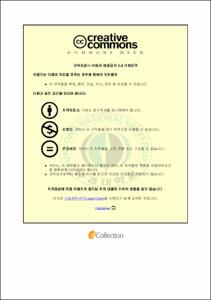효소활성 자재를 이용한 음식물류 폐기물처리 공정 특성 및 미생물의 동정
- Alternative Title
- Characteristic of food waste treatment process using enzyme activity materials and bacterial identification
- Abstract
- To process effectively the extinction of food waste used by enzymatic activity material, as much of enzyme, the selected excellent strains, which resolve organic matter well were put and studied the function to remove a bad smell and make food waste light.
First of all, made the specific microscopic organism in soil microbe(radiation germ, yeast) revitalize and set in sawdust the result of enzymatic activity is that Bacilluscereus,Bacillusthuringiensis, Bacillussp,Serratiasubsp. etc. came to move. Bacillus andSerratia, as microorganisms, are well known for their processing food waste effectively. To identify the effect of processing food waste treatment used by enzymatic activity material of microorganism, there was a production of fermentor and studied giving different temperature, ventilation map, pH, and etc. As a result, little change caught in pH, however, approximately 20 % change caught in temperature and ventilation map.
The decomposition of food waste making the use of microorganism should keep neutral pH mostly, keep 60 ℃ temperature to make the food waste light. however, in case of using enzymatic activity material of microorganism, the decomposition of food waste achieved with a good condition even in pH 4~9, and 35 ℃ temperature. Especially, only 30 % of injection of ventilation map can make decomposition efficiency outstanding. Therefore, the expenses for handling food waste would be reduced.
To make the bad smell of food waste decrease, mixed and stirred enzymatic activity material and food waste was measured by gas detector. Hydrogensulfide was also decreased from 30 mg/L to 1 mg/L as a result.
This experiment gives us the ability to contribute the effective disposal and odor removing of food waste. Moreover, the aspect of secure the microorganism resource for processing food waste is significance as well.
- Issued Date
- 2015
- Awarded Date
- 2015. 2
- Type
- Dissertation
- Publisher
- 부경대학교 대학원
- Alternative Author(s)
- Lee, Haeng Yeon
- Affiliation
- 부경대학교
- Department
- 대학원 U-EcoCity협동과정
- Advisor
- 이병헌
- Table Of Contents
- 제 1 장 서 론 1
제 2 장 문 헌 연 구 3
2.1 음식물류 폐기물의 발생 및 처리현황 3
2.1.1 음식물류 폐기물의 발생현황 3
2.1.2 음식물류 폐기물의 처리현황 4
2.2 음식물류 폐기물 소멸공정 5
2.3 음식물류 폐기물 소멸에 영향을 미치는 인자 6
2.3.1 염분 농도 6
2.3.2 온도 및 분해매체 7
2.3.3 미생물의 영향 8
제 3 장 실험재료 및 방법 10
3.1 효소활성자재의 미생물 배양 및 고착방법 10
3.2 효소활성자재를 이용한 분해매체 제작 및 적용 11
3.2.1 효소활성자재를 이용한 분해매체의 제작 11
3.2.2 분해매체를 이용한 소멸화 공정 12
3.2.3 음식물류 폐기물 소멸 모식도 13
3.2.4 효소활성자재의 평가방법 16
3.3 미생물의 분리 및 동정 17
3.3.1 미생물의 형태학적 특성 분석 17
3.3.2 API kit를 이용한 미생물의 동정 19
3.3.3 염기서열을 이용한 미생물의 동정 21
제 4 장 실험결과 및 고찰 24
4.1 효소활성자재의 미생물 배양 및 고착방법 24
4.2 효소활성자재를 이용한 음식물류 폐기물 처리기 26
4.2.1 온도에 의한 소멸 특성 비교 26
4.2.2 pH에 의한 소멸 특성 비교 28
4.2.3 공기주입에 의한 소멸 특성 비교 30
4.2.4 소멸 공정에서의 악취 특성 비교 32
4.2.5 발효된 톱밥의 염분 비교 34
4.3 효소활성화자재 내 미생물의 분리 및 동정 36
4.3.1 API kit를 이용한 미생물의 동정 36
4.3.2 염기서열을 이용한 미생물의 동정 41
4.4 소멸기 사용 없이 효소활성자재를 이용한 노지의 음식물류 폐기물 소멸 43
제 5 장 결 론 45
참고문헌 47
- Degree
- Master
- Appears in Collections:
- 대학원 > U-EcoCity 협동과정
- Files in This Item:
-
-
Download
 효소활성 자재를 이용한 음식물류 폐기물처리 공정 특성 및 미생물의 동정.pdf
기타 데이터 / 1.96 MB / Adobe PDF
효소활성 자재를 이용한 음식물류 폐기물처리 공정 특성 및 미생물의 동정.pdf
기타 데이터 / 1.96 MB / Adobe PDF
-
Items in Repository are protected by copyright, with all rights reserved, unless otherwise indicated.